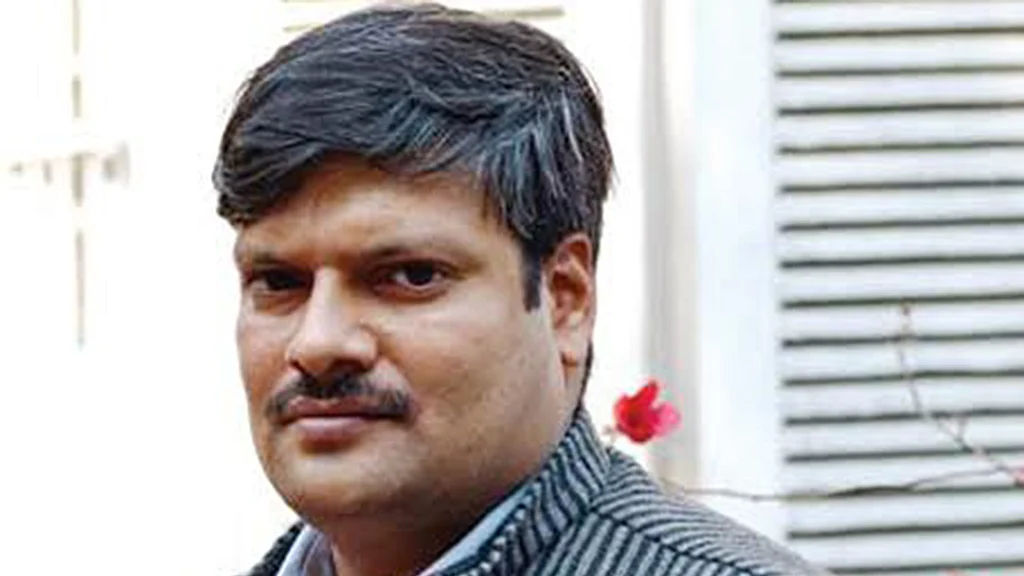The Government and the three monkeys
The Govt’s focus to please international rating agencies at the cost of domestic economy is to be blamed for the current slowdown says economist Himanshu Kumar

What do you think of the state of Indian economy and how precarious is it now?
The economy has been slowing down for quite some time now. All the drivers of the economy, domestic demand, private investment, government expenditure and exports have shown a downward trend. The agricultural sector is suffering from low income and uncertainty. Manufacturing growth rate has collapsed. Construction sector which witnessed a decline in the last quarter of 2016-17 is yet to show concrete signs of recovery. These sectors are also employment intensive sectors and the worsening activity in these sectors is contributing to demand deflation in the economy.
How much did Demonetisation, GST etc. contribute to it?
The slow down started before demonetisation and GST. Some of it was already visible in various indicators such as decline in real wages and worsening income situation in agriculture even before the NDA government took over.
However, the government ignored most of these warning signals and continued to pat its back on the basis of the new series of GDP data. Private investment was already slowing down. The real hit to the rural economy came with the decline in commodity prices after August 2014. This worsened after the back to back drought.
Demand deflation was already evident even before demonetisation was executed. But the mild recovery which was visible after a good monsoon in 2016 was reversed by demonetisation. In that sense, demonetisation contributed to reverse the situation and create further crisis in the economy. Since then it has continued its downward slide with GST being the final nail in the coffin.
It is basically the inept handling of the economy by the government and the worst sufferers are the households engaged in unorganised sector and agriculture, majority of whom are poor.
What are the chances of reviving the economy?
The fundamentals of the economy are still strong and there are various options available which can be used to stabilise and revive the economy. Given that demand has been one of the biggest problems in the economy, the first priority should be reviving demand by increasing public expenditure. This not only includes increasing spending in agriculture, providing remunerative prices to farmers but also through NREGA, PMGSY and various other programmes. Also, NFSA and other forms of support to rural population which can increase their disposable income. The government should also increase spending on rural and urban housing which can revive construction. reducing taxes on petroleum will also give some relief to the middle class and also bring down cost of cultivation.
It should also take steps to revive the unorganised sector which has borne the blunt of demonetization and GST. They should be encouraged by providing access to credit and access to markets. All of these are possible and have been suggested in different forums but are unlikely to be of any use unless the government acknowledges the gravity of the situation.
What do you think about jobless growth? Is there a solution to current job crisis?
Jobless growth has now turned into job-loss and no growth. The slowdown in the economy is certainly going to make things worse particularly the slowdown in construction and manufacturing sectors. So far, all the data from public as well as private sources have indicated that the economy has lost jobs since this government took over. In fact, the only public and credible data from the Labour Bureau suggests that 16 million workers lost jobs in the first year of this government. Since then demonetisation and slowdown have contributed to worsening of the situation.
But it is not just that the economy is not creating jobs, even the income earned by workers is declining. The Labour Bureau data clearly shows that non-agricultural wages have continued to show decline in real wages since 2013-14. This further aggravates the jobs situation with demand deflation hitting a large segment of the economy.
Is the Government doing enough to tackle the widespread agrarian distress?
As of now, there is no evidence to suggest that the government is even willing to recognise the gravity of the situation, leave aside the possibility of taking corrective steps. In fact, in the first three years of this government, investment in agriculture in constant prices has seen a sharp decline. The cost of cultivation of most crops has seen an increase. Fertiliser consumption has seen a sharp decline and most agricultural commodities have seen large fluctuations in commodity prices with prices dropping sharply in most cases.
The only response so far has been the which has ended up helping the insurance companies more than the farmers. In fact, it is the farmers who are subsidising the insurance companies. Already farmer resentment is building up.
Farmers in Tamilnadu, Madhya Pradesh, Maharshtra, Rajasthan and Uttar Pradesh have been on streets but this has not led to any recognition of their demands. The farm loan waiver in UP has become a joke with loan being waived of 1 paise and 10 rupees. Maharashtra loan waiver is yet to take off. but the loan waiver has also meant that fiscal situation of states are in bad shape. This has already resulted in decline in investment from the states. Along with crop economy, the beef politics has also hit the livestock economy. It has affected the trade of cattle and also production and export of livestock products.
Follow us on: Facebook, Twitter, Google News, Instagram
Join our official telegram channel (@nationalherald) and stay updated with the latest headlines
